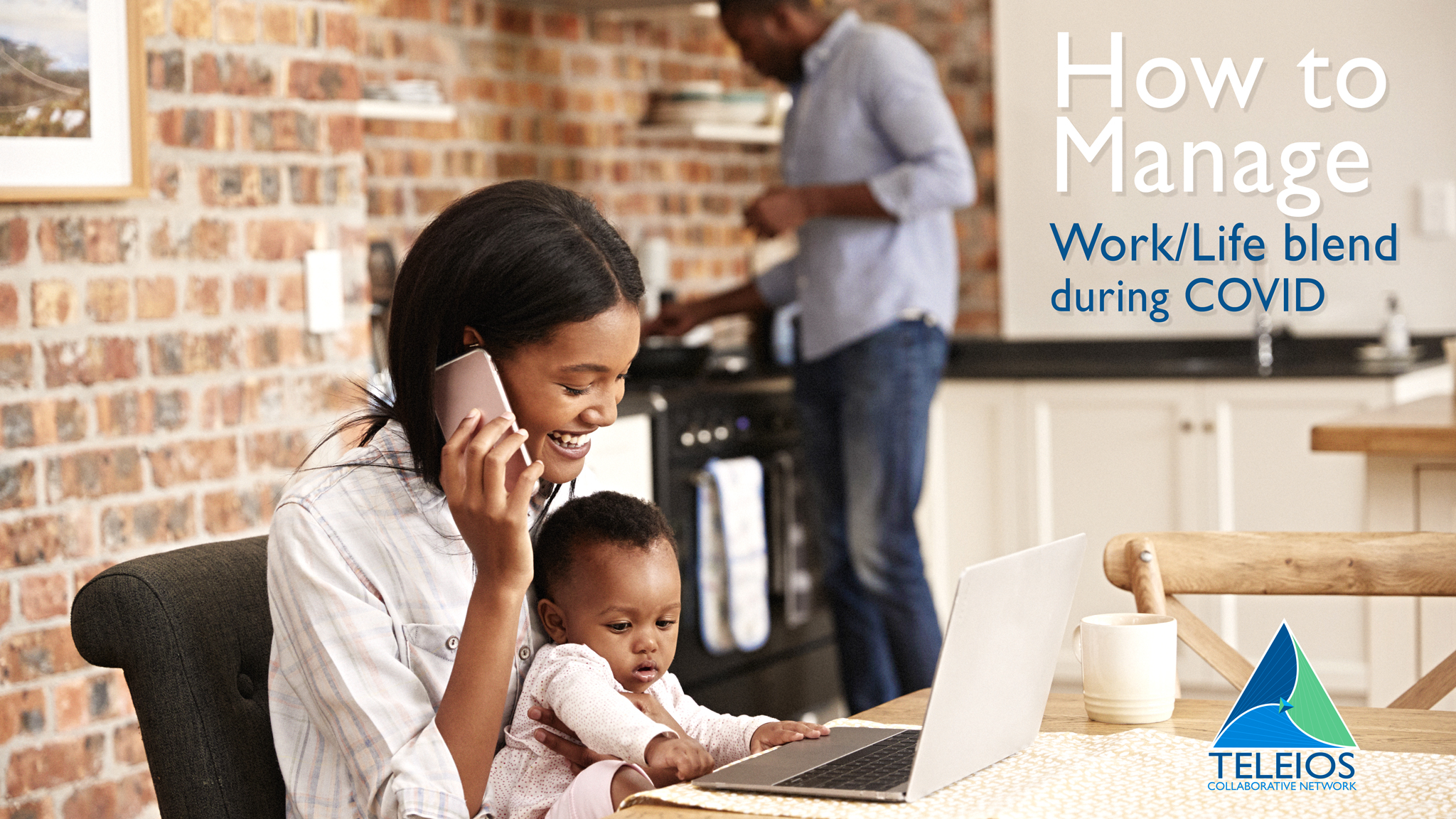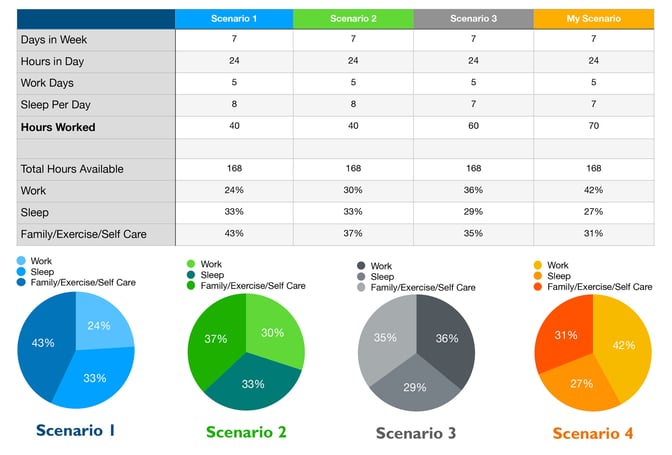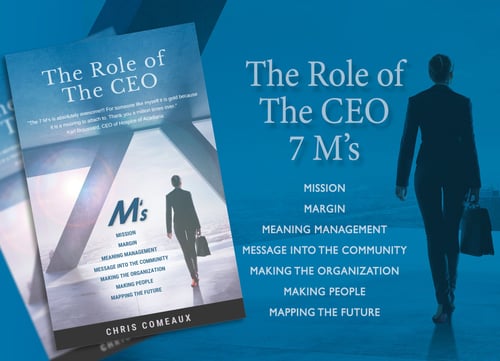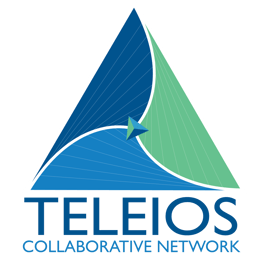10 min read
How to Manage Work / Life Blend During COVID (and probably afterwards)
By: Chris Comeaux on 8/31/20 8:08 AM

Several years ago, I wrote a blog on the rhythms of life. It was the collective wisdom I have harvested over the years from mentors, books, and daily living about how to have a better “work - life balance”.
As I shared in that blog, I don’t really like the term “balance” when referring to this subject, because it connotes a visual of scales of justice in our minds eye. In my experience that visual is defeating because many days we will inevitably feel out of balance.
In reality, many of us who work full-time jobs in healthcare work more than 40 hours a week out of necessity. By viewing the blend of our work and personal life through the lens of “balance”, we create a feeling of failure rather than motivation from the outset, knowing we’ll work more than a typical 40-hour week.
I did the math and it was eye-opening for me. See the chart below:
WORK/LIFE SCENARIOS

For a principles-based standpoint regarding how to deal with the above, I’m linking my blog on the Rhythms of Life. Despite my evolving viewpoint on blend vs. balance, I do still stand by that harvested wisdom from many wise wonderful mentors.
For many of us, the advent of COVID has upended our realities, changing everything about our schedules and necessitating adaptation to a work-from-home reality.
Prior to COVID, a large portion of my time was spent on the road, traveling between TCN members, some by car and some by plane. Like many people, the last time I was on an airplane was in early March of this year, and to be honest, I don’t miss it at all. In fact, I don’t believe we will ever go back to the amount of travel we did pre-COVID because we have found technology to provide effective and efficient means of communication that eliminate its need.
For many people now, the reality of our day is Zoom, Microsoft Teams, and other related tools that allow us to do our work from home. But this new reality is not without its issues. I have heard from many of you regarding your struggles with work-life balance which many have been bad before, but have only gotten worse since COVID, especially establishing boundaries between work and everything else.
Here is a summary of the challenges I have heard from many of you:
- My home office is the kitchen table and I can’t walk by it without feeling guilty I am not working.
- I no longer have boundaries; I work constantly because home is where I work.
- I am not having enough family time and I am not taking care of myself like I was prior to COVID. The “COVID 20” has become a term many refer to for the weight they have gained.
- People are not respecting boundaries because they are working around the clock and they expect others to work around the clock as well.
- My home is chaos because my kids are doing school from home, my wife is working from home, and I am working from home. It sounds like the trading pit of a brokerage firm.
If you have others that don’t fall into the categories above send me an email at ccomeaux@teleioscn.org. I would love to hear from you.
Like you, I am struggling with many of the same things. In reading and researching this topic, here are the tactics I have harvested:
- Create a dedicated workspace in your home. Think hard about repurposing space that has multiple uses like the family table or the family couch. If possible, stay away from those because it is difficult to separate their uses. For example, when you are trying to have dinner with your family or sit on the couch and talk with your spouse, you are thinking about work because that is what you have been doing in that space throughout the day. If your space is limited, be creative. When we lived in Pensacola during my time with the Studer Group, my wife and I had a super large closet with a window. I turned a corner of that closet into an office and utilized an Xbox game chair with the floor as my desk. It certainly wasn’t conventional nor “Pottery Barn worthy,” but it gave me a dedicated space as my home office. I still miss that office; it was one of my favorites.
- Work the math yourself per the chart earlier in this blog. Set your boundaries accordingly. Ask yourself a few questions as you study the chart: How much are you willing to work? What does your role require? There may be times when you need to dial the hours up and times you can dial them down based on key priorities. There are 168 hours in a week for everyone to work with in creating their blend. The first principle to blending is determining how much work is required, and then it becomes a simple math equation of how much time you have remaining for other things. If you spend all your money, you shouldn’t be surprised there is nothing in your bank account. If you spend all your time on work, then you shouldn’t be surprised there is not time for other important things to you.
- Create “rules of the road” for others to contact you. If you don’t there will be no rhyme or reason by which priorities come into to you. Subsequently, it will be hard to create boundaries when you are always available. We create highways with signposts that regulate how things travel to us. See my blog on this topic here: "Rules of the Road"
- Give yourself permission for work-life blend throughout the day. This is dependent on the above. For example, some days I work out at 11am or 1pm depending on meetings. I was feeling guilty about that because it is during the traditional work hours of the day (see how those old habits cling to us?), but I am able to mentally check out because I know that, if there is a crisis, it will come in to me via my rules of the road for getting in contact with me. For some of you, the blend might be being able to go to the doctor with a family member, going to the grocery store, taking a walk, or spending time with your kids who are home due to COVID. Based on the above, work and life become blended, and you can focus on what you need to without checking your phone every 10 seconds. Communicate with your colleagues about how (or if) you want to be contacted in your off hours. You may want to set some guidelines to control how people reach you, thereby reducing unwanted interruptions.
- Have mental clarity about what needs to get done and when you will do it. This includes having a place where you write down the many tasks that you need to do, whether that is in a notebook, a task management app, a project management system, or in your calendar. The important thing is that you aren’t lying in bed at night trying to remember everything on your mental to-do list. This is a sign you don’t have a great organization system, or what I like to call a “getting things done organization” system.

- Ensure you have the right tools to work from home. As I mentioned in the challenges list, a friend shared how chaotic it is at his home due to his kids doing school from home, his wife working from home, and him working from home. He said at any moment you can hear 3 different conversations and that it sounds like a call center.
- If this is your experience, it’s wise to invest in headsets so your conversations are only heard by you, and it will help everyone focus on their work and be in their space without intruding upon one another.
- Be sure you have good internet bandwidth because it will frustrate the heck out of you if you don’t.
- Be sure you are competent with the technology of Zoom, Teams, or whatever your organization uses. If you still struggle with utilizing these functions, block time on your calendar to watch a YouTube video or do a tutorial. Most technology these days is somewhat intuitive. Practice different scenarios so that when the real meetings are taking place you aren’t distracting yourself and others.
- Lastly, learn how to let it go. One of the great CEOs we work with in TCN, Lynn Flanagan, shared with me a trick she learned while working in mental health. You can imagine the things a mental health nurse observes. A mentor told her she needed a ritual to let it go when she was headed home, essentially – a way to leave it at work. Lynn said there was a bush beside where she parked, and she “told it to the bush” each day before she headed home. She now has a new ritual in her office that she does before leaving for the day. She shared there was a day a few weeks back she got in her car and forgot to perform the ritual in her office. She got out of the car, went back to her office, performed the ritual and then was able to leave it there for the day. Given that wisdom, I have adopted my own ritual. At home it is easy to walk from my basement and into the main floor. My commute now is about 10 seconds, so I don’t have much time to transition. I noticed I was bringing a spirit of tension or whatever I was carrying with me from work into our home. I found this great app called the One Minute Pause. It’s a faith-based app which provides a one-minute meditation. The key focus of the minute-long ritual is saying “God, I give everyone and everything to you.” This premise sets the stage for laying everything down and letting it go as you transition into a different element of your life. It will be there tomorrow for me to take back up, but I have found that this ritual helps tremendously with my work-life blend.
It’s important for each of us to recognize that we are not alone in navigating and adapting to this new way of working and living. As you create your own work-life blend, it is my hope that the above tools and tactics are helpful in alleviating stress, guilt, and other emotions that come with working from home, and provide a means to become effective, efficient, and healthy both now and going forward.
If you have other tools you would like to share, please email me: ccomeaux@teleioscn.org or leave them in the comment section here. We’d love to hear from you.
Chris Comeaux, President / CEO of Teleios Collaborative Network

If you want to learn more about the TCN Leadership System
shoot us an email at ccomeaux@teleioscn.org
Download the eBook below and unlock your true self-leadership potential.

An organizational model that allows not-for-profit hospices (Members) to leverage best practices, achieve economies of scale and collaborate in ways that better prepare each agency to participate in emerging alternative payment models and advance their charitable missions.
Related Posts
Work-Life Harmony
Each year, I like to revisit the concept of a work-life balance and find this topic especially...
The Rhythms of Life and Work Life Blend
We will take a break this week from the Fundamentals of Every Great Organization System and resume...


